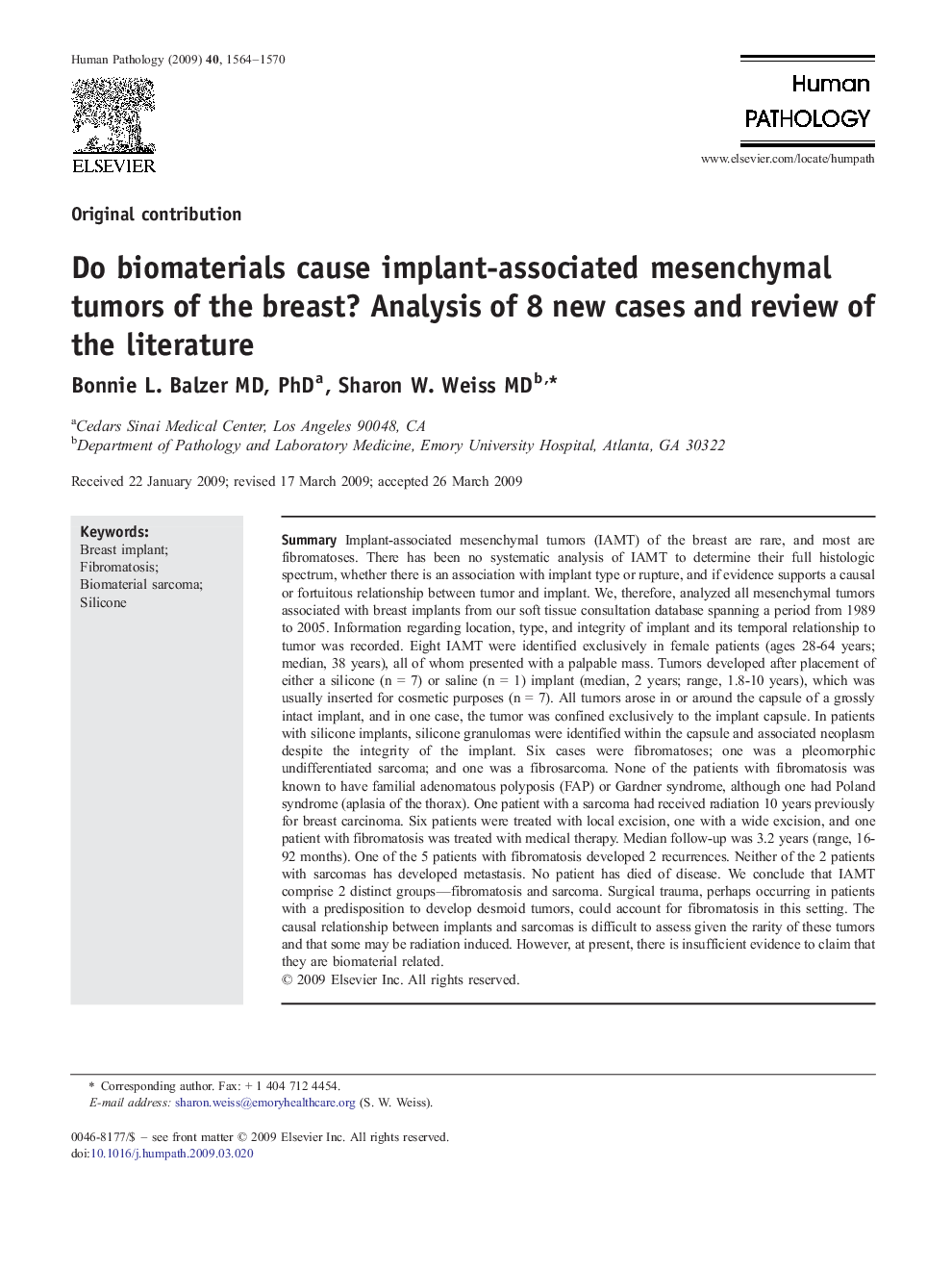| کد مقاله | کد نشریه | سال انتشار | مقاله انگلیسی | نسخه تمام متن |
|---|---|---|---|---|
| 4134435 | 1271459 | 2009 | 7 صفحه PDF | دانلود رایگان |

SummaryImplant-associated mesenchymal tumors (IAMT) of the breast are rare, and most are fibromatoses. There has been no systematic analysis of IAMT to determine their full histologic spectrum, whether there is an association with implant type or rupture, and if evidence supports a causal or fortuitous relationship between tumor and implant. We, therefore, analyzed all mesenchymal tumors associated with breast implants from our soft tissue consultation database spanning a period from 1989 to 2005. Information regarding location, type, and integrity of implant and its temporal relationship to tumor was recorded. Eight IAMT were identified exclusively in female patients (ages 28-64 years; median, 38 years), all of whom presented with a palpable mass. Tumors developed after placement of either a silicone (n = 7) or saline (n = 1) implant (median, 2 years; range, 1.8-10 years), which was usually inserted for cosmetic purposes (n = 7). All tumors arose in or around the capsule of a grossly intact implant, and in one case, the tumor was confined exclusively to the implant capsule. In patients with silicone implants, silicone granulomas were identified within the capsule and associated neoplasm despite the integrity of the implant. Six cases were fibromatoses; one was a pleomorphic undifferentiated sarcoma; and one was a fibrosarcoma. None of the patients with fibromatosis was known to have familial adenomatous polyposis (FAP) or Gardner syndrome, although one had Poland syndrome (aplasia of the thorax). One patient with a sarcoma had received radiation 10 years previously for breast carcinoma. Six patients were treated with local excision, one with a wide excision, and one patient with fibromatosis was treated with medical therapy. Median follow-up was 3.2 years (range, 16-92 months). One of the 5 patients with fibromatosis developed 2 recurrences. Neither of the 2 patients with sarcomas has developed metastasis. No patient has died of disease. We conclude that IAMT comprise 2 distinct groups—fibromatosis and sarcoma. Surgical trauma, perhaps occurring in patients with a predisposition to develop desmoid tumors, could account for fibromatosis in this setting. The causal relationship between implants and sarcomas is difficult to assess given the rarity of these tumors and that some may be radiation induced. However, at present, there is insufficient evidence to claim that they are biomaterial related.
Journal: Human Pathology - Volume 40, Issue 11, November 2009, Pages 1564–1570